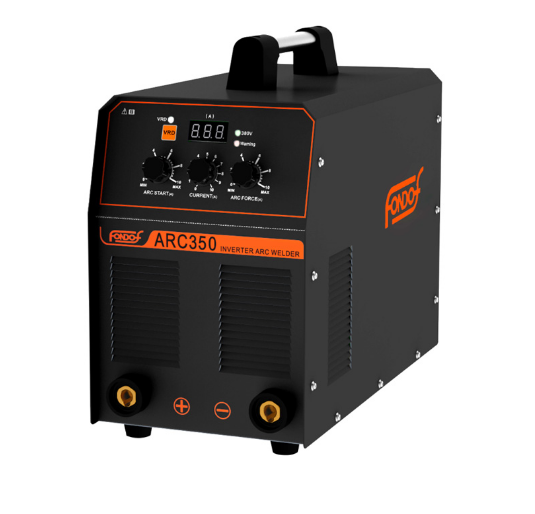Arc Welding: Defining the Process and Exploring its Diverse Types
In the realm of welding, where metal fuses and structures take shape, arc welding stands as a fundamental and versatile technique. It encompasses a range of processes that utilize the heat generated by an electric arc to melt and join metals. This article delves into the definition of arc welding and explores the various types of arc welding processes, shedding light on their mechanisms, applications, and advantages.
Unraveling the Essence of Arc Welding
At its core, arc welding involves the creation of an electric arc between an electrode and the base metal. This electric arc generates intense heat, causing the metals to melt and fuse together. The electrode serves a dual purpose: it acts as both the heat source and the filler material, depending on the welding process.
The process takes place within a welding power supply, where the voltage and current are carefully controlled to regulate the intensity of the arc and the amount of heat generated. The melted metals solidify as they cool, forming a strong, continuous weld joint.
Diverse Types of Arc Welding Processes
1. Shielded Metal Arc Welding (SMAW)
Also known as stick welding, SMAW is one of the most common and versatile arc welding processes. It involves a consumable electrode coated in a flux that generates a protective shield of gas and slag during the welding process. This shield prevents atmospheric contamination, ensuring a clean and durable weld. SMAW is used in various industries, from construction to repair work, due to its portability and adaptability to different metals.
2. Gas Metal Arc Welding (GMAW)
GMAW, commonly referred to as MIG (Metal Inert Gas) welding, employs a continuously fed consumable wire electrode and a shielding gas to protect the weld area from atmospheric gases. This process is favored for its speed, efficiency, and ability to weld a variety of metals. GMAW is extensively used in automotive manufacturing, fabrication shops, and industries requiring high-quality welds.
3. Gas Tungsten Arc Welding (GTAW)
GTAW, often known as TIG welding, is renowned for its precision and versatility. It employs a non-consumable tungsten electrode and a shielding gas to protect the weld area. The process allows for intricate control of the heat input and weld pool, making it suitable for welding thin materials, exotic metals, and critical applications such as aerospace components.
4. Flux-Cored Arc Welding (FCAW)
FCAW is a variation of MIG welding that uses a tubular wire electrode filled with flux. This eliminates the need for an external shielding gas, as the flux generates a protective shield during the welding process. FCAW is known for its high deposition rates and is commonly used in construction, shipbuilding, and fabrication where speed and productivity are key.
5. Submerged Arc Welding (SAW)
SAW is an automated arc welding process that involves feeding a continuous wire electrode under a layer of flux. The heat generated by the arc melts the flux, which creates a protective blanket over the weld area. SAW is known for its efficiency in welding thick materials and is often used in industries such as pipe manufacturing, pressure vessel fabrication, and heavy equipment production.
Related links:
What is the normal working mode of online UPS?
What Age Can Kids Ride Electric Car?
What is the Use of Rotary Damper?
Are Wireless Access Points Safe?
What Are the Benefits of UV LED Print Technology?
Unveiling the Benefits of Platinum Plated Titanium Anodes
Understanding Lead Tin Antimony Alloy Anodes Explained
Advantages of Arc Welding
The popularity of arc welding processes can be attributed to the numerous advantages they offer:
1. Versatility
Arc welding processes can be applied to a wide range of metals and alloys, making them suitable for various industries and applications.
2. Portability
Processes like SMAW are portable and can be performed in various environments, including outdoor locations and remote areas.
3. Speed and Efficiency
Certain arc welding processes, such as GMAW and FCAW, offer high deposition rates, leading to faster welding and increased productivity.
4. Precision
Processes like GTAW provide precise control over the weld pool and heat input, making them ideal for delicate and critical applications.
5. Cost-Effectiveness
Arc welding processes are generally cost-effective due to the availability of consumable electrodes and the ability to weld a variety of materials.
Shaping the World Through Arc Welding
In conclusion, arc welding is a cornerstone of modern metal fabrication, providing the means to join metals with precision, strength, and versatility. The diverse types of arc welding processes cater to different needs, from heavy industrial applications to intricate aerospace components. As technology continues to advance, arc welding processes remain at the forefront, shaping the world of manufacturing and construction.
Related links:OHIO Diamond Engraving Stylus vs. Traditional Tools: Which Wins?
Why Platinum Coated Titanium Anodes Are Game Changers in Electrolysis
10 Essential Tips for Mastering the Triple Light Switch Setup


